海外社会实践:英国可持续建筑环境暑期社会实践队“学”文化篇(一)
—— 可持续建筑环境——理论学习
作者 : 环境与生态学院 于传洁 戴隆康 岳欣雨 张笑语
经历了一周环绕英国的游学,我们回到了英国雷丁大学,开始了本次社会实践的第二阶段——学习最新的可持续建筑理念。我们知道建筑节能是全世界的一大热点话题,无论是在众多大型的国际会议或是在一些建筑公司内部,这都是无法绕开的一个话题。让我们跟着英国可持续建筑环境暑期社会实践队一起,走进可持续建筑的世界。
After a week of study tour around the UK, we returned to the University of Reading in the UK and started the second phase of this study tour – learning the latest sustainable architecture concepts. We know that building energy efficiency is a hot topic in the world. Whether it is in many large international conferences or in some construction companies, this is a topic that cannot be circumvented. Let us join the British Study Group and walk into the world of sustainable architecture.

第一天,姚润明教授为我们介绍了关于可持续建筑环境的三大主要因素以及英国的教学方式与中国教学方式的不同。同时邀请了Derek Clements-Croome教授进行《21世纪的宜居建筑》的讲座。
On the first day, Professor Yao Runming introduced us to the three main factors of the sustainable building environment and the differences between the teaching methods in the UK and the Chinese teaching methods. At the same time, Professor Derek Clements-Croome was invited to give a lecture on "The 21st Century Livable Architecture".
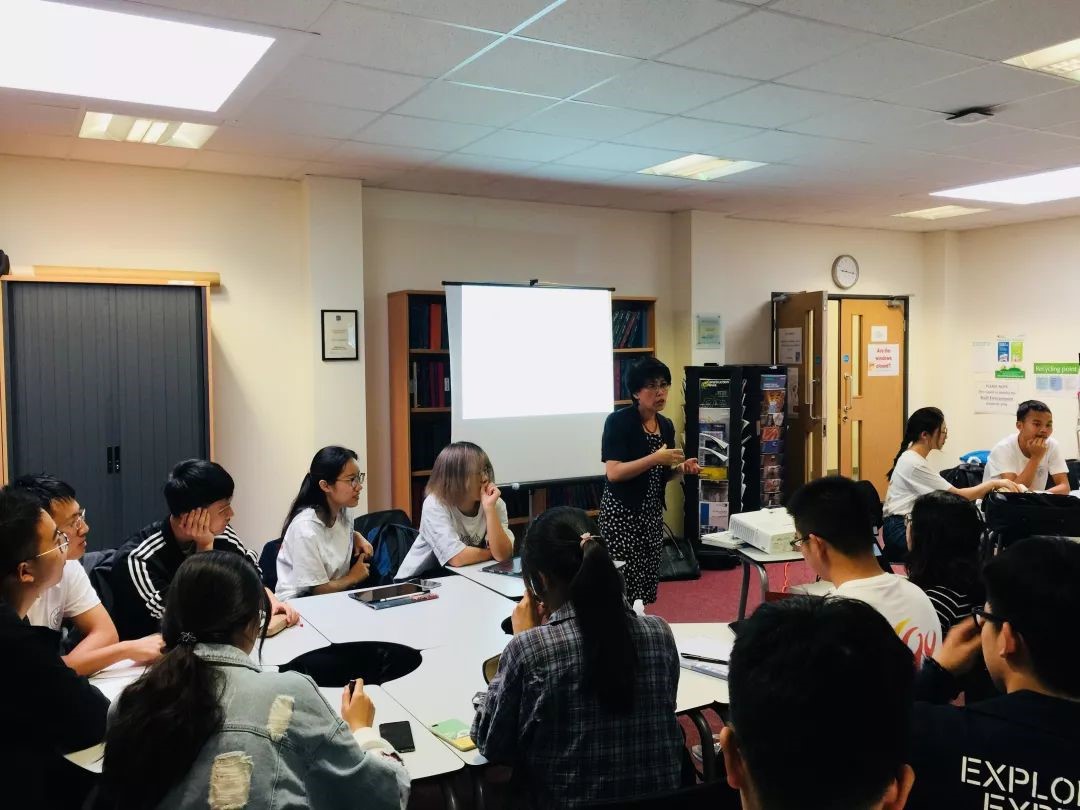
在讲座中,教授介绍了从历史、大自然中得到的关于室内环境温湿度控制的启示。同时强调可持续的设计才会增加该设计本身的价值,这也与我们经常强调的可持续发展道路不谋而合。教授通过虚拟设计图向我们展示了未来的一些宜居建筑设计图,让我们领略了一番超前卫设计的魅力
In the lecture, the professor introduced the inspiration from the history and nature to the control of indoor environment temperature and humidity. At the same time, emphasizing sustainable design will increase the value of the design itself, which is also in line with the sustainable development path we often emphasize. The professor showed us some of the future livable architectural plans through the virtual design drawings, let us appreciate the charm of ultra-avant-garde design.
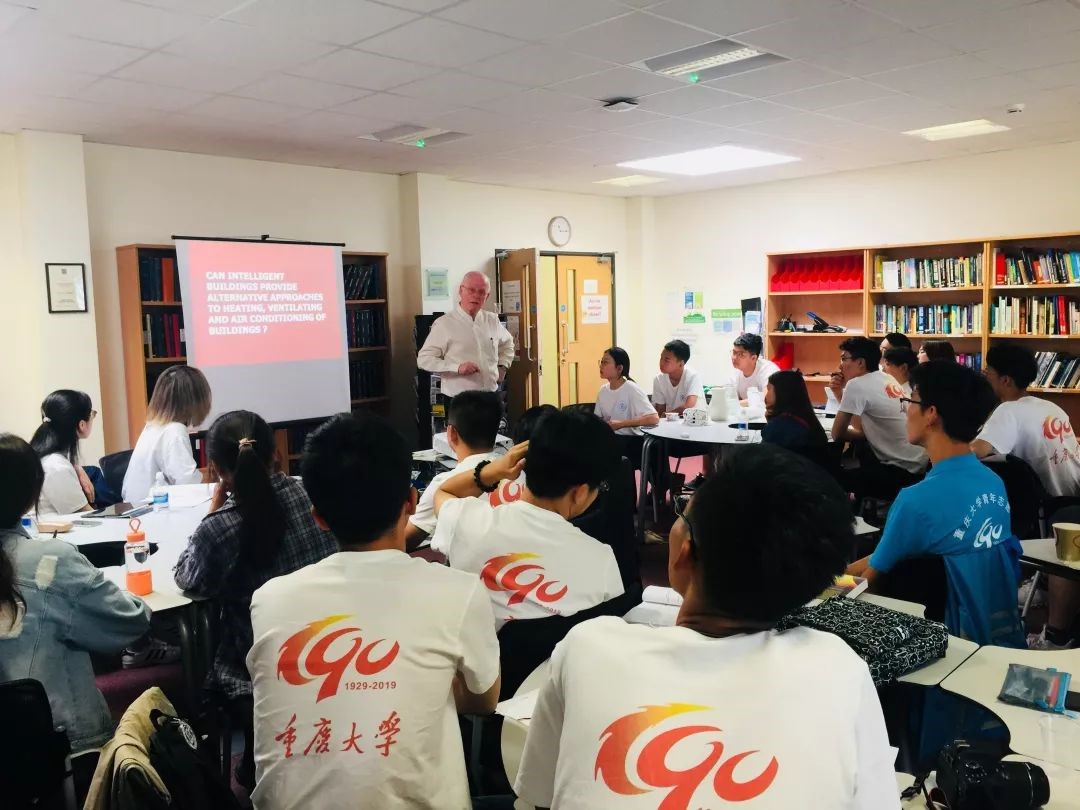
之后,为加深大家对于可持续建筑设计理念的认识,我们来到了英国建筑研究院集团,英国建筑研究院里展览的民用住宅。总体来说体现出可持续建筑的理念,绿色节能的设计较多。常见的设置有隔热保温墙板,自然通风系统,新型绿色材料,光伏屋顶,可再生能源供热系统与室内水循环系统(可以利用生活废水和空调冷凝水)。目前国内已有类似技术,但是应用范围和商业化水平应该有限。
Later, in order to deepen our understanding of the concept of sustainable architectural design, we came to the British Architectural Research Institute Group, the British Institute of Architecture to display the residential houses. In general, it reflects the concept of sustainable architecture, and there are many designs for green energy conservation. Common settings include insulated wall panels, natural ventilation systems, new green materials, photovoltaic roofs, renewable energy heating systems and indoor water circulation systems (which can utilize domestic wastewater and air conditioning condensate). At present, there are similar technologies in China, but the scope of application and commercialization should be limited.

在布里斯托,游学团成员们感受到了水资源循环在可持续建筑中的重要性,同时也对于科研方法有了一定的认识,对于水体指标检测,水体品质评估,项目运营经验等有了自己的看法。
In Bristol, members of the study tour group felt the importance of water resources recycling in sustainable buildings, and also had a certain understanding of scientific research methods. They had their own knowledge of water body indicators, water quality assessment, and project operation experience. the opinion of.
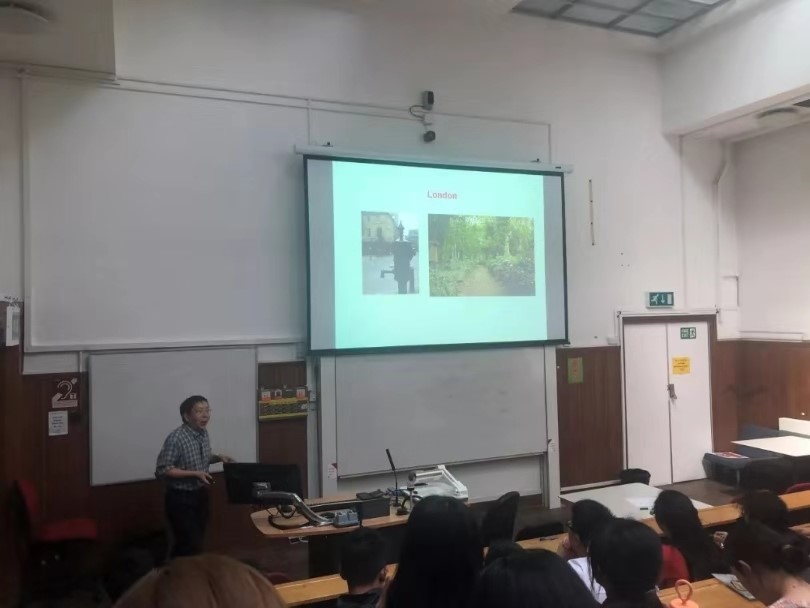
在剑桥大学,我们了解了建筑物室内温度控制的相关知识。教授介绍了自古以来人类为了控制室内温度所作出的尝试以及一些研究成果,并且叮嘱我们,我们肩负着中国未来关于建筑环境研究的重任,我们应该努力学习,不要犯下欧洲国家在建筑领域曾经犯下的错误。
In Cambridge, we learned about building room temperature control. The professor introduced the attempts made by humans to control indoor temperature since ancient times and some research results, and we are shouldering the heavy responsibility of China's future research on the construction environment. We should study hard and not commit European countries in the construction field. The next error.
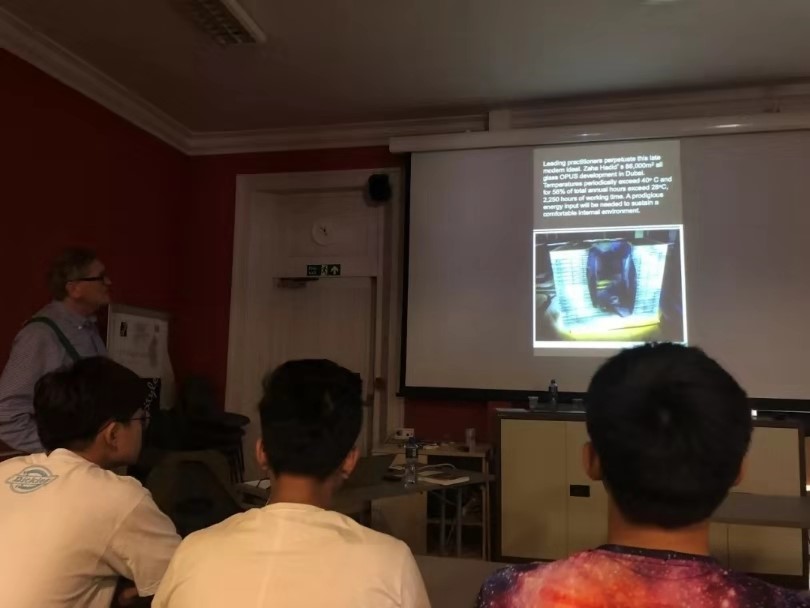
教授通过水立方的实例让大家深刻的体会到整体效果大于局部的总和,并通过问题不断引导我们,让我们理解什么是系统、什么是系统思维。之后,为了加深大家对于系统思维的理解,教授让我们用系统思维的方法想象未来的重庆是一座怎样的城市,并通过画笔将其表达出来。同学们在结合教授课程中的教导,大胆想象并向教授表达了自己的想法。
Through the example of the Water Cube, the professor deeply understands that the overall effect is greater than the sum of the parts, and constantly guides us through the problem, let us understand what is the system and what is the system thinking. Later, in order to deepen our understanding of system thinking, the professor asked us to use systematic thinking to imagine what kind of city Chongqing is in the future and express it through a brush. The students combined with the teachings in the teaching course to boldly imagine and express their ideas to the professor.
博士从多层次角度上讲述建筑环境中的系统创新、创新及绿色创新的定义、MLP的案例学习以及有关发光二极管技术的团队合作。其中博士提出了问题:环境、社会、经济这三者的可持续性是否能真正地合理结合达到真正的可持续发展并引发了同学们的激烈讨论。博士对进行了生动贴切的讲解,同学们也对绿色创新营造的概念有了一定的理解。
From a multi-level perspective, the Ph.D. describes the definition of system innovation, innovation and green innovation in the built environment, case studies of MLP, and teamwork on LED technology. Among them, the Ph.D. raised the question: Whether the sustainability of the environment, society, and economy can be truly combined to achieve true sustainable development and sparked heated discussion among students. The doctor gave a vivid and in-depth explanation, and the students also had a certain understanding of the concept of green innovation.
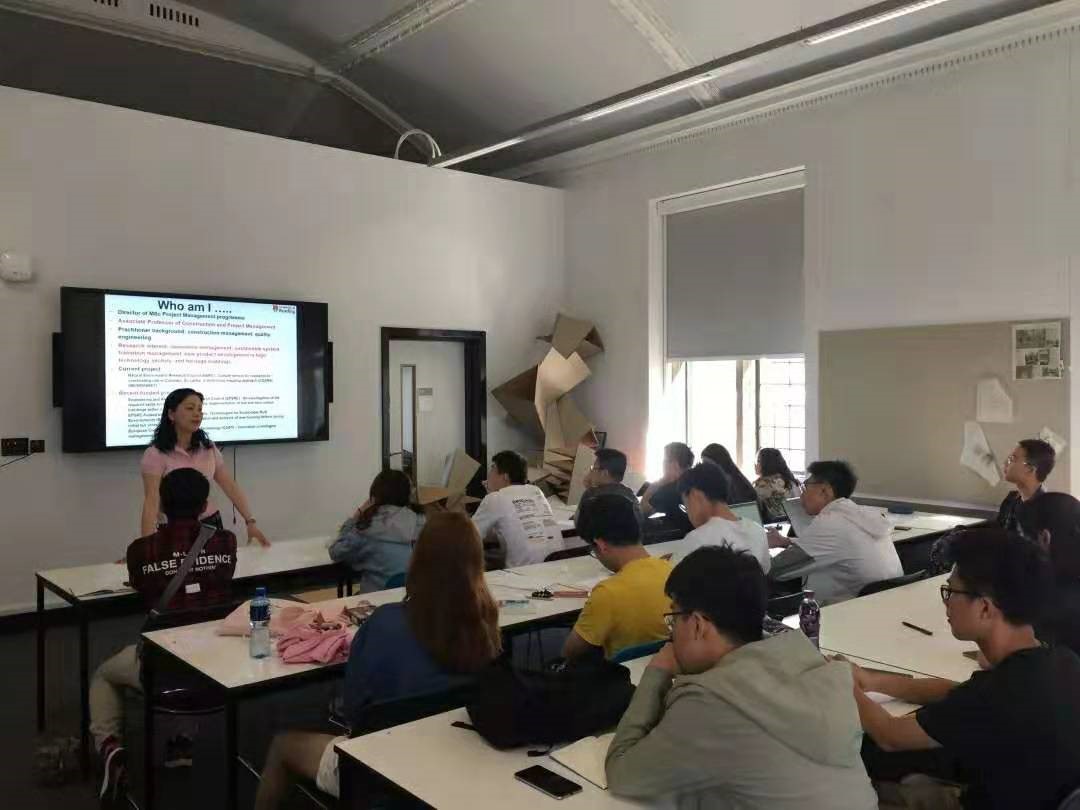
Ziona女士是社会学出身,所以相较于建筑方面出身的设计师、工程师,她更加注重住户的体验。她从建筑的体验切入,告诉我们在设计或者建设的时候要基于建筑的功能、建筑的周围环境,要服务于城市、服务于当地人民,同时也要兼顾合适的设计,目的就是要在有限的空间里发挥最大的作用并且兼顾美感。
Ms. Ziona is a sociology student, so she is more focused on the experience of the residents than the architects and engineers who are born in the building. She cuts through the experience of the building and tells us that when designing or building, it should be d on the function of the building, the surrounding environment of the building, serving the city, serving the local people, and also taking into account the appropriate design. The purpose is to be limited. Play the most important role in the space and balance the beauty.
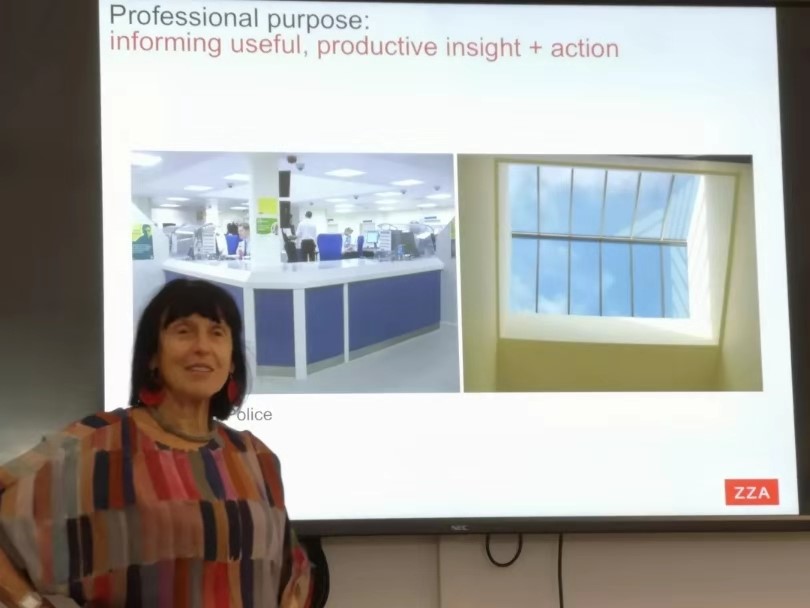
Mehdi Shehrestani博士,与同学们一起探讨建筑设计过程中室内光线设计问题。他提到“建筑设计过程中不能单纯考虑节能的问题,还要综合考量建筑的功能,建筑周围环境等因素。此外,他还简单的介绍了DIAL仿真软件并鼓励同学们自己动手,根据博士的提示及要求,对于一栋拟建的简单办公室进行仿真。
Dr. Mehdi Shehrestani, with the students, discussed the interior lighting design issues in the architectural design process. He mentioned that “the problem of energy conservation cannot be simply considered in the process of building design, but also the functions of the building and the surrounding environment of the building should be comprehensively considered. In addition, he also briefly introduced the DIAL simulation software and encouraged the students to do it themselves, according to the doctor. Tips and requirements for simulation of a proposed simple office.
 我要投稿
我要投稿
